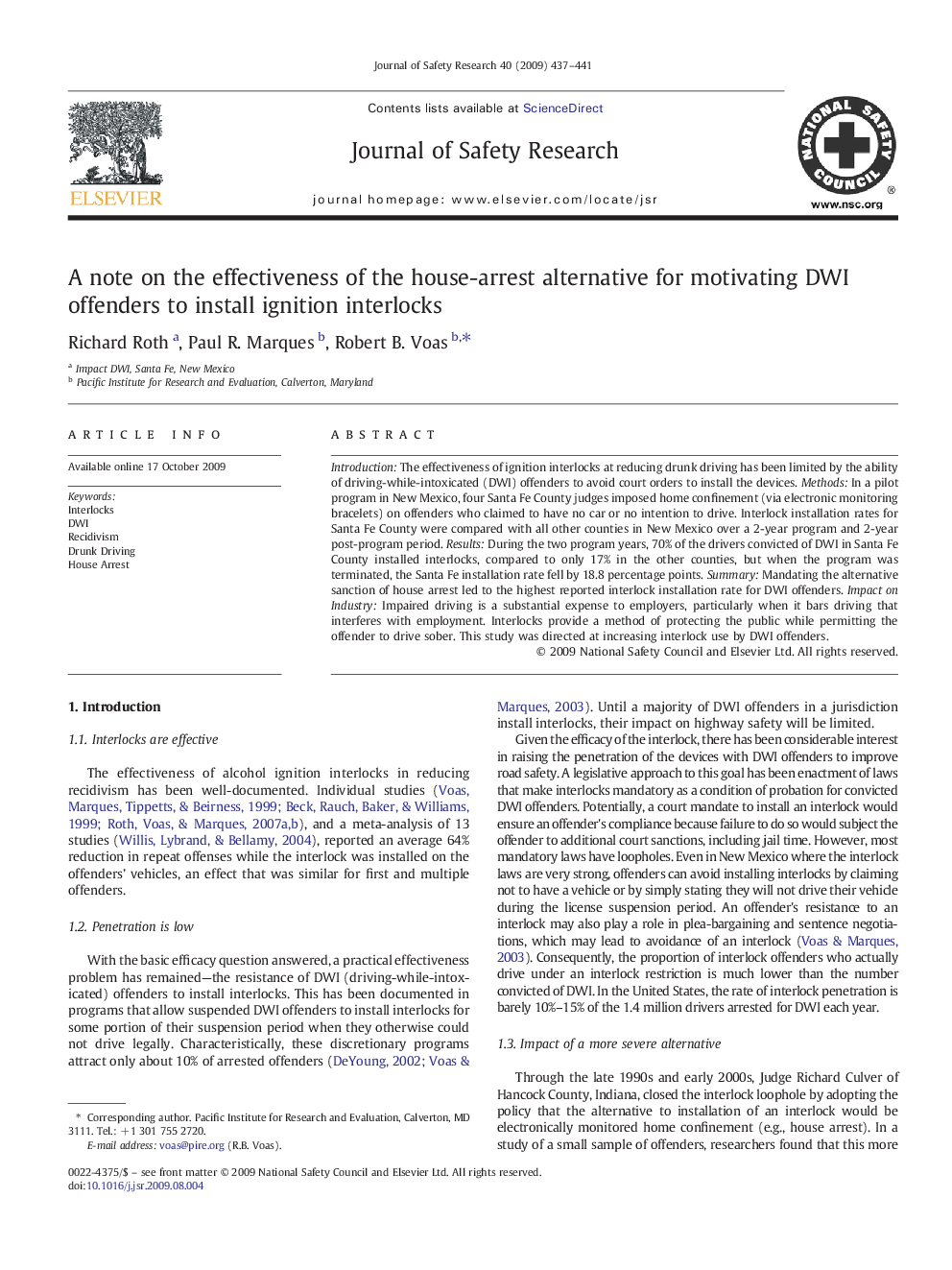| Article ID | Journal | Published Year | Pages | File Type |
|---|---|---|---|---|
| 587834 | Journal of Safety Research | 2009 | 5 Pages |
IntroductionThe effectiveness of ignition interlocks at reducing drunk driving has been limited by the ability of driving-while-intoxicated (DWI) offenders to avoid court orders to install the devices.MethodsIn a pilot program in New Mexico, four Santa Fe County judges imposed home confinement (via electronic monitoring bracelets) on offenders who claimed to have no car or no intention to drive. Interlock installation rates for Santa Fe County were compared with all other counties in New Mexico over a 2-year program and 2-year post-program period.ResultsDuring the two program years, 70% of the drivers convicted of DWI in Santa Fe County installed interlocks, compared to only 17% in the other counties, but when the program was terminated, the Santa Fe installation rate fell by 18.8 percentage points.SummaryMandating the alternative sanction of house arrest led to the highest reported interlock installation rate for DWI offenders.Impact on IndustryImpaired driving is a substantial expense to employers, particularly when it bars driving that interferes with employment. Interlocks provide a method of protecting the public while permitting the offender to drive sober. This study was directed at increasing interlock use by DWI offenders.
